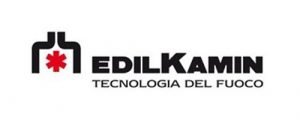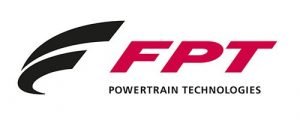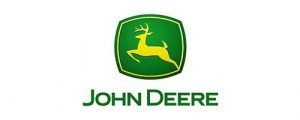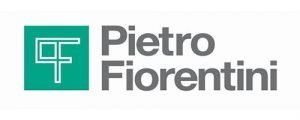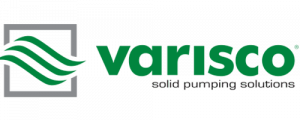- Prototypes
- January 19, 2024
To create a prototype that meets the needs of the industry that will use it, resorting to 3D printing is often the best solution. 3D printing is an additive manufacturing technology that allow to build an object, layer by layer, strating from a digital model.
All 3D printing techniques originate 2.5D models, obtained from the union of a very dense series of discrete sections called layers.
However, selecting the most suitable 3D printing technology for prototyping is not easy, given the numerous factors that can influence the choice. From materials to the technical and aesthetic characteristics that you want to give to the prototype; from the complexity of the piece you want to create to the actual printing times. Depending on each variable, we will list throughout this article the different 3D printing technologies ideal for prototyping.
Indice
ToggleSelective Laser Sintering (SLS)
With this 3D printing technology it is possible to create functional prototypes starting from thermoplastic polymers which, in the form of powders, are selectively fused together by a high-energy laser and solidified into objects without real dimensional limits. Why choosing this technology? To create large prototypes with complex structures, whose subparts can be printed already equipped with mechanical joints to be assembled together later.
The materials for SLS molding are, in fact, thermoplastic powders which can be mixed with additional materials (aluminium, glass, carbon) to enhance the performance of the prototype from a thermal-resistance point of view.
The level of detail guaranteed by SLS technology naturally varies depending on the 3D printer used. That is why choosing a last generation printeras the one in Prototypes lab becomes fundamental not only to optimize print time but above all to improve the final output, and obtain prototypes with regular and precise details.
Benefits
- Reproduction of fine and complex details
- Glass-like, highly defined and nearly smooth surface finishes
- Material properties close to industrial standards
Disadvantages
- Limited choice of materials (PA12 with various fillers)
- The mechanical properties of the prototypes are a part of the industrial panorama of polymers known today
Areas of use
- Automotive
- Electrical engineering
- Appliance
- Food
Direct Metal Laser Sintering (DMLS)
By exploiting the powerds of metarials such aluminium, steel,stainless steel and titanium, it is possible to create metal prototypes that are very complex in shape but have low mass, almost impossible to create through the most basic 3D printing techniques, especially if you want to safeguard a high level of detail.
Being part of the Powder Bed Fusion processes – where a thermal energy source selectively fuses polymer powder particles together into a solid object, DMLS technology uses a laser to sinter grains of the chosen metallic material into solid 3D shapes. The DMLS technique is suitable for creating prototypes and complex functional parts, maximizing production and delivery times of the final project. Because of their solidity, precision and complexity, prototypes printed with DMLS technology ultimately find use in the aerospace, automotive and medical sectors.
Benefits
- Creation of prototypes and complex functional parts
- Fast production times
Disadvantages
- Given the high energies involved, creating a piece without distortions may require various tests and/or even the use of supports with the aim of better controlling the shape.
Areas of use
- Micromechanics
- Food
- Racing
- Aerospace
Stereolitography (SLA)
Part of the Direct Printing techniques, this direct 3D printing procedure produces approximate models defined as 2.5D, i.e. obtained from the union of a very dense series of discrete sections called layers.
In prototyping, stereolithography is ideal for building parts through the selective addition of material in liquid form. Inside a tank the material is processed by an ultraviolet laser which strengthens it to create the desired object.
Although we have spoken of approximate models, the adjective used should not be misleading: thanks to the addition of very thin and refined layers, the models present a high degree of detail regardless of their size. Objects from Stereolithography (such as templates and calipers) are made of thermosetting resin, a material easy to finish and has very smooth surfaces, to build both opaque and transparent rigid details, with important mechanical properties, especially if the material is enriched with ceramic.
Benefits
- Reproduction of large and complex parts
- Starting from liquid material the layer can be really thin
- The smoothness of the surfaces is very good as the material is 100% dense
Disadvantages
- Few materials, all with a specific chemical matrix (being photopolymers and not thermoplastics)
- Usually fragile materials
Areas of use
- Automated manufacturing where efficient placements and installations are required.
- Model making and aesthetic prototypes
Based on the prototype you wish to create, it will be appropriate to choose the most effective 3D printing technique by seeking the solution that best balances the technical requirements of the project with time and cost.
The most difficult cases may require multi-stage approaches, using 3D printing to create a Master object, from which to then obtain a silicone mold into which polyurethane resins can be poured (vacuum casting).
The advantage is that there are numerous polyurethane resins and very similar to industrial polymers, at least concerning mechanical and aesthetic properties. However, being a composite technique, it requires higher times and costs which are often justified by small editions (from 10 to 25 pieces).
For this reason, if you do not know what to choose, you can rely on a specialized technician who will be able to guide you in the many choices. From stereolithography to Powder Bed Fusion techniques (SLS and DMLS), Prototypes team will be able to direct you towards the 3D printing technique best suited to your needs. Contact us via website or send an email to tecnico@prototypes.it.
Prototypes Services
With Rapid Prototyping services we can make your designs a reality by producing functional parts in plastic, rubber, aluminum and cast iron in a very short time, reducing your “Time to Market” and enabling overall project cost containment.

3D CAD

Rapid Prototyping in metal and plastic

Reverse Engineering

Equipment construction

Castings supply

Mechanical design

Tridimensionalization

Parametric modeling
Applications
-
Grids
-
Caps
-
Knobs
-
Burners
-
Wok Supports
-
Bathtubs
-
Distributors
-
Shut-off valves
-
Control valves
-
Pump body
-
Carrier lantern
-
Mouthpieces
-
Valves
-
Shredders
-
Open Impellers
-
Closed Impellers
-
Single-channel impellers
-
Speakers
-
Circulators
-
Supports
-
Engine shields
-
Inverter boxes
-
Carcasses
-
Finned masses
-
Streetlights
-
Racing Components
-
Aluminum frames
-
Engine cylinders
-
Motor heads
-
Brake calipers
-
Clutch Crankcase
-
Engine crankcase
-
Gearboxes
-
Frame elements
-
Forks








